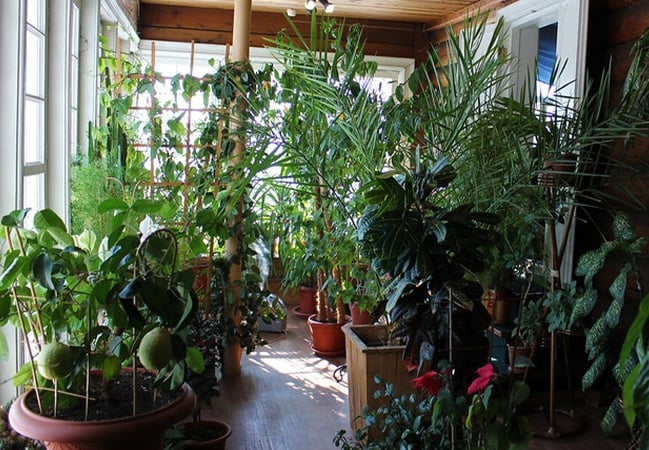
Welcome to 'The Ultimate Beginner's Guide: An 8-Step Journey to Master Indoor Gardening.' This comprehensive article aims to equip you with the knowledge and tools you need to flourish as an indoor gardener. Whether you're a novice or have a green thumb, this guide will take you through the essential steps, from understanding the basics to choosing the right plants, preparing pots, setting up lighting, and providing regular care.
Get ready to embark on a fulfilling and rewarding journey into the world of indoor gardening.
Understanding Basics
To truly master indoor gardening, it is essential to have a thorough understanding of the basic principles and techniques involved.
One of the fundamental aspects to consider is soil selection. When it comes to indoor gardening, choosing the right soil is crucial for the health and growth of your plants. Opt for a well-draining soil mix that retains moisture without becoming waterlogged. A blend of peat moss, perlite, and vermiculite is often recommended.
Additionally, understanding proper watering techniques is vital. Overwatering can lead to root rot, while underwatering can cause wilting and stunted growth. The key is to find the right balance. Water your plants when the top inch of soil feels dry, ensuring that the water is evenly distributed throughout the root system.
Choosing Plants
After understanding the basics of soil selection and watering techniques, the next step in mastering indoor gardening is choosing the right plants for your space. When it comes to plant selection, there are a few factors to consider that will help ensure success in your indoor garden.
- Light requirements: Different plants have different light requirements. Some thrive in bright, direct sunlight, while others prefer indirect or low light conditions. Assess the lighting situation in your space and choose plants that will thrive in that environment.
- Space availability: Consider the size of your indoor space and choose plants that will fit well. Some plants, like trailing vines or tall palms, require ample space to grow and spread out, while others, like succulents or small herbs, can thrive in small pots or even on windowsills.
- Maintenance level: Be honest with yourself about your commitment level to plant care. Some plants require more attention and care than others. If you're a beginner or have a busy schedule, opt for low-maintenance plants that can tolerate a bit of neglect.
Preparing Pots
Once you have chosen the right plants for your indoor garden, it is crucial to properly prepare the pots for optimal plant growth.

Choosing pot sizes and selecting the right potting soil are two important factors to consider. When selecting pot sizes, it is essential to choose a size that allows for proper root development and growth. The pots should have drainage holes to prevent waterlogging, which can lead to root rot.
Additionally, selecting the right potting soil is vital for providing the necessary nutrients and moisture retention for your plants. Look for a high-quality potting mix that is well-draining and specifically formulated for indoor plants. Avoid using garden soil, as it can be too heavy and may contain pests or diseases.
Setting up Lighting
Now, let's delve into the next step of our indoor gardening journey: setting up the lighting.
Proper lighting is crucial for the success of your indoor garden, as it provides the necessary light energy for photosynthesis. When it comes to choosing the right lights, there are two main options: LED and fluorescent lights.
LED lights are energy-efficient, long-lasting, and emit a full spectrum of light that supports plant growth. On the other hand, fluorescent lights are more affordable and provide a good amount of light for plants.
To position your lights for optimal growth, it is important to place them directly above your plants, ensuring that the light is evenly distributed across all foliage. Avoid placing the lights too close to the plants, as this can cause heat stress.
Additionally, consider using reflectors or light hoods to maximize the light output and minimize light loss. Remember to adjust the height and angle of the lights as your plants grow to maintain the ideal distance for light absorption.

Regular Care
To maintain the health and vitality of your indoor garden, it is essential to regularly care for your plants.
Pruning techniques play a crucial role in maintaining the overall shape and growth of your plants. Regularly pruning your plants helps to remove dead or diseased leaves, encourages new growth, and improves air circulation. When pruning, make sure to use sharp, clean tools to avoid damaging the plant.
Additionally, pest prevention is a critical aspect of regular care. Inspect your plants regularly for any signs of pests such as aphids, spider mites, or mealybugs. If you notice any pests, take immediate action to prevent them from spreading. You can use organic pest control methods such as neem oil or insecticidal soap to eliminate pests without harming the environment or your plants.
Regularly caring for your indoor garden will ensure healthy and thriving plants.
Frequently Asked Questions
How Do I Deal With Pests and Diseases in My Indoor Garden?
To effectively deal with pests and diseases in an indoor garden, it is crucial to focus on prevention and treatment. Utilizing organic pest control methods such as natural predators, companion planting, and proper sanitation can help maintain a healthy and thriving garden.
What Are Some Common Mistakes to Avoid When Starting an Indoor Garden?
When starting an indoor garden, it is important to avoid common mistakes that can hinder plant growth. One key aspect to focus on is proper watering techniques, as overwatering or underwatering can lead to issues such as root rot or dehydration.
Can I Use Tap Water to Water My Indoor Plants?
Using tap water to water indoor plants can lead to water-related issues. Filtered water provides benefits such as removing impurities and chlorine, preventing potential harm to plants. It is crucial to prevent water-related issues in indoor gardening for optimal plant growth and health.

How Do I Propagate Indoor Plants?
To propagate indoor plants, start by choosing the right plants for propagation. Consider factors such as their growth habits and compatibility with indoor conditions. Then, employ tips and tricks like using appropriate cutting techniques and providing optimal conditions for successful propagation.
What Are Some Alternative Methods of Indoor Gardening Besides Using Pots?
Vertical gardening and hydroponics are two alternative methods of indoor gardening that offer freedom from traditional pots. Vertical gardening maximizes space by growing plants vertically, while hydroponics allows plants to grow in a nutrient-rich water solution without soil.
 Business & FinanceHealth & MedicineTechnologyLifestyle & CultureScience & EnvironmentWorld NewsPrivacy PolicyTerms And Conditions
Business & FinanceHealth & MedicineTechnologyLifestyle & CultureScience & EnvironmentWorld NewsPrivacy PolicyTerms And Conditions
